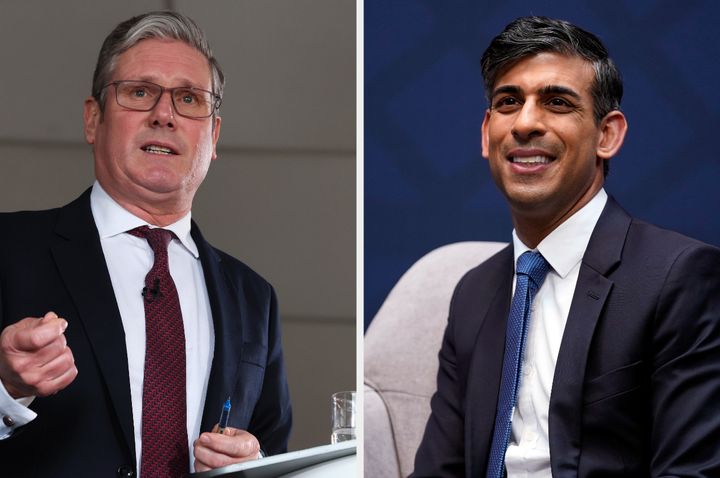
Keir Starmer has followed Rishi Sunak’s lead in publishing details of how much money he pays to the taxman.
But the relatively new habit among senior British politicians has prompted a debate after it emerged the Labour leader is paying a far greater proportion of his earnings in tax than the prime minister – despite Sunak making 10 times more.
What did Rishi Sunak pay?
On Wednesday, the prime minister published tax documents showing that in 2021/22 he made nearly £2 million through income and capital gains, which cover assets such as properties and shares.
His income from dividends was £172,415, and from capital gains was £1.6 million. The earnings largely came from a US-based investment fund.
His total investment income that year was more than double his MP’s salary of £81,908.
For that same financial year, it showed that he paid £432,493 in tax. It means he is paying an effective rate of 22%.
It’s roughly the same to what a nurse would pay in income tax.
What did Starmer pay?
Starmer’s tax return shows the Labour leader earned £126,154 for being an MP and leader of the opposition in the financial year 2021/22.
On top of that, he made capital gains of £85,466, on which he paid £23,930 capital gains tax. The Labour leader said the earnings were linked to the sale of a house he helped his sister buy.
It means he is paying an effective rate of 32%.
Whythe difference?
Put simply, it is because employment income is a much bigger share of Starmer’s earnings, and employment income is taxed at a much higher rate. Employment income in the UK is taxed at up to 47%.
Plus, capital gains tax on investment property – 28% – is higher than on stocks and shares, which is 20%.
What do experts say?
Dan Neidle, the founder of the Tax Policy Associates think tank, said: “The tax system favours capital gains. I think maybe people would regard that as unfair.
“It also distorts behaviour, with people structuring their arrangements to receive gains not income. That’s an undesirable way for a tax system to work.
“Nigel Lawson (then chancellor) equalised rates in 1988, and for 20 years capital gains tax and income tax rates were the same. Probably the UK’s most successful 20 years of recent times.
“So it’s not credible to say it would be an economic disaster to equalise rates.”
Sunak was a new backbench MP when he voted for the Tory government cut to to the top rate of capital gains, from 28% to 20%, in 2016.
What do Sunak and Starmer say?
The prime minister dodged a question about whether capital gains tax should be higher during a visit to North Wales.
He told broadcasters: “I said I would publish my tax returns. I was pleased to be able to do that yesterday in the interest of transparency.”
The prime minister’s official spokesperson said the returns showed Sunak paid a “considerable amount” in capital gains tax.
“It is not unusual for savers to choose to put their investments in funds which focus on delivering long-term growth rather than short-term income generation,” the spokesman said.
Before his details were published, the Labour leader also swerved a question on whether the capital gains tax rate should be reviewed, saying that the prime minister’s financial details are for “others” to analyse.
